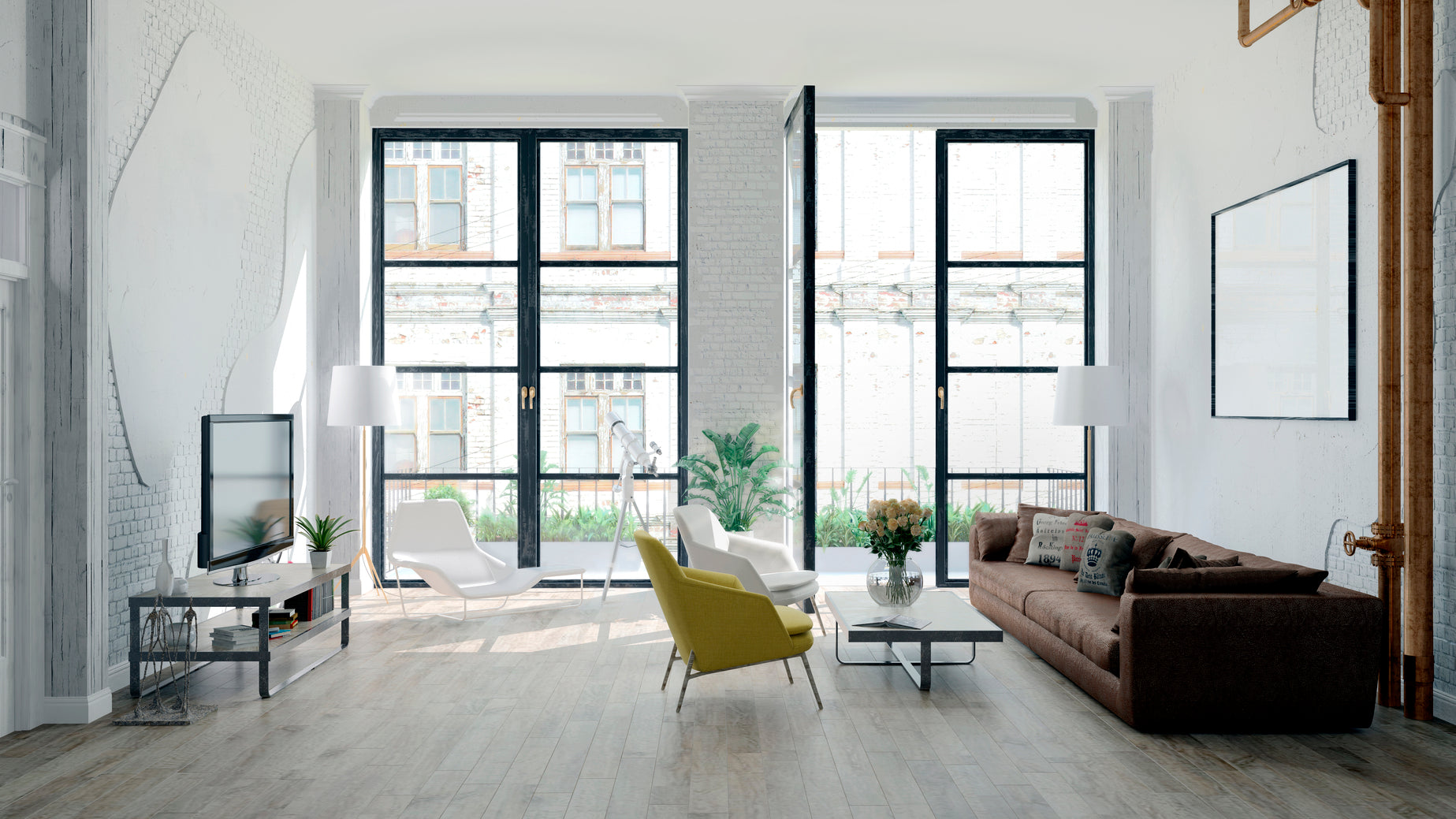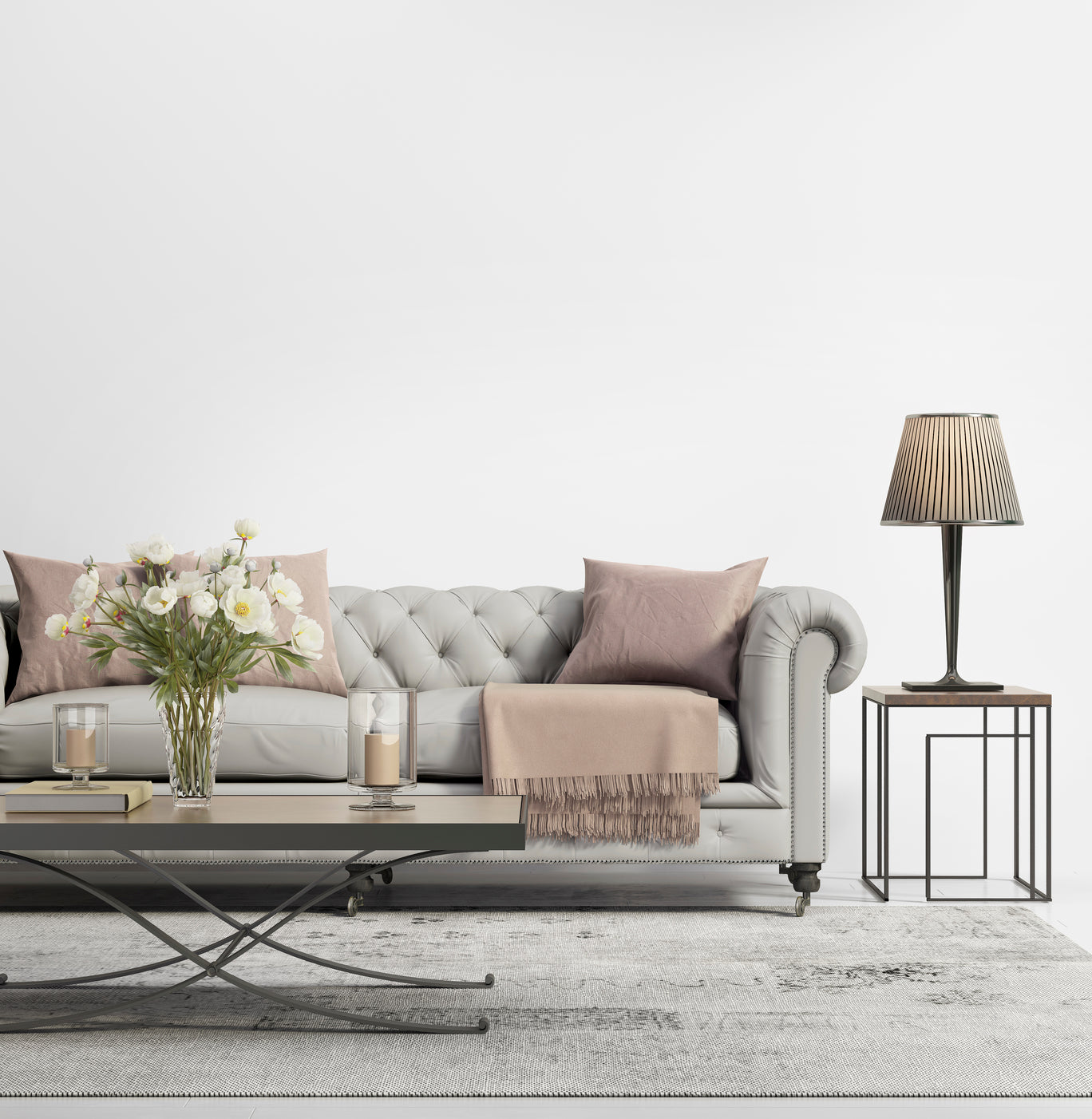Simple Steps To Thinking Big With Small Spaces

No one wants to feel suffocated in their home. But if you're living in an apartment, or have smaller rooms in your house, it can often feel that way. Luckily, how you decorate and arrange a room can make a big difference to how spacious it feels. There are a few important things to keep in mind when trying to make a small space appear larger:
1. Use the right colors
One of the most important factors in how large a room looks is the color of it. Lighter paint shades on walls will make a space feel more open, and it’s best to stick to only one or two colors that are similar (like a cream white and very light blue, or multiple shades of one light color). Painting walls one color, but using a darker color for trim, can make a room seem constrained.
You can - and should - use dark colors on your ceiling though. A darker ceiling will make the top of the room seem elevated and will give the room more depth. Even a light, but different, color on your ceiling will contrast well with your walls.
2. Use wall space effectively
Just as color will dramatically change how big a room feels, what you place on walls and windows can also alter the perceived size of a room.
Mirrors are a great way to create an illusion of depth. Hang a large mirror high up, like over a fireplace, and the top of your room will appear more spacious. Or, place a few smaller mirrors next to one another.
Aside from mirrors, don't clutter walls. You could try one main art piece or decoration, which will catch the eye without becoming overwhelming. Avoid multiple small wall pieces, unless they are placed very closely together.
3. Pick the right furniture

Minimalism is key when it comes to picking furniture for a smaller room. Instead of buying many pieces of furniture, opt for just a few main pieces to focus the room around. Don't be afraid to go big though; a few larger pieces is better than many small ones.
A great way to cut back on smaller, unnecessary pieces that will clutter a room is to find furniture that can serve multiple purposes. Some ottomans have space for storage, which can eliminate the need for a dresser or storage bins. They're also a great place to hide extra pillows and throws. Trunks are great for storage, and can double as a rustic coffee table. Furniture that can fold up and be easily stored is also a great option, especially if you use your space for hosting. Oftentimes, chairs and tables can be folded up and put into storage.
When selecting pieces like sofas, tables, and dressers, pick those that have raised legs. This adds space near the floor, which makes everything look more open.
If you have - or need - to fit a lot of furniture into a small room, purchase furniture pieces that are the same color as your walls. This will help pieces blend into the room, and widen it. For a modern, spacious look, try finding transparent furniture, like a glass coffee table, which will appear to take up no space at all.
4. Store smart
If you need a lot of space for books or knick-knacks, consider floor-to-ceiling bookcases, as these will make your ceiling appear higher. Alternatively, small shelves placed high up on the wall will create a similar effect. No matter how you choose to use storage space, be sure not to fill exposed shelving completely. Leaving just a bit of space on shelves and bookcases will make the room feel more open. Try to hide most of your clutter in closed spaces, like trunks, closed cabinets, or drawers.
5. Place furniture strategically
How you arrange your furniture is just as important as what kind you buy. While it may seem like pushing everything against the walls will make the middle of the room open, it will actually give a more cluttered feel. Try to push furniture about a foot away from walls, and space out all of your pieces around the room. Don't be afraid to angle pieces either. Not all of your furniture needs to be perfectly aligned with walls, and it is better to space them out.
6. Open up your floor space

A cluttered floor can also make a room appear to lack space. Placing multiple small rugs, or one rug that takes up almost the entire floor space, will make the room feel smaller than it is. Instead, select one smaller rug for the center of the room, like under a coffee table or sofa. A striped rug will elongate a room. If you like your flooring, you can leave it bare, and instead bring the focus onto your accents or furniture.
7. Light it right
Lighting is key to any room, but small spaces even more so. One main light fixture, especially one that is on the ceiling in the center of the room, can really make a space feel small. Instead, try placing multiple light fixtures, at varying heights, around the room. Multiple sources of light will add depth.
If you have some natural lighting in the room, don't waste it! Select drapes that match your walls and blend in, or forgo drapes entirely. Don't let furniture block windows wither. Windows and natural light are the best way to make a space feel open.
8. Minimize accents
Decorations and accents add a unique touch to every room, but with smaller spaces, they can quickly over-clutter. Fewer, larger accents are best for small rooms, as they draw attention without seeming overwhelming. Select one main piece - like a clock or lamp - to place on tables or shelving. Also try to balance the physical accents you have with any wall decorations. A few main statement pieces instead of many decorations is always best, and makes a room feel both bigger and more modern.
